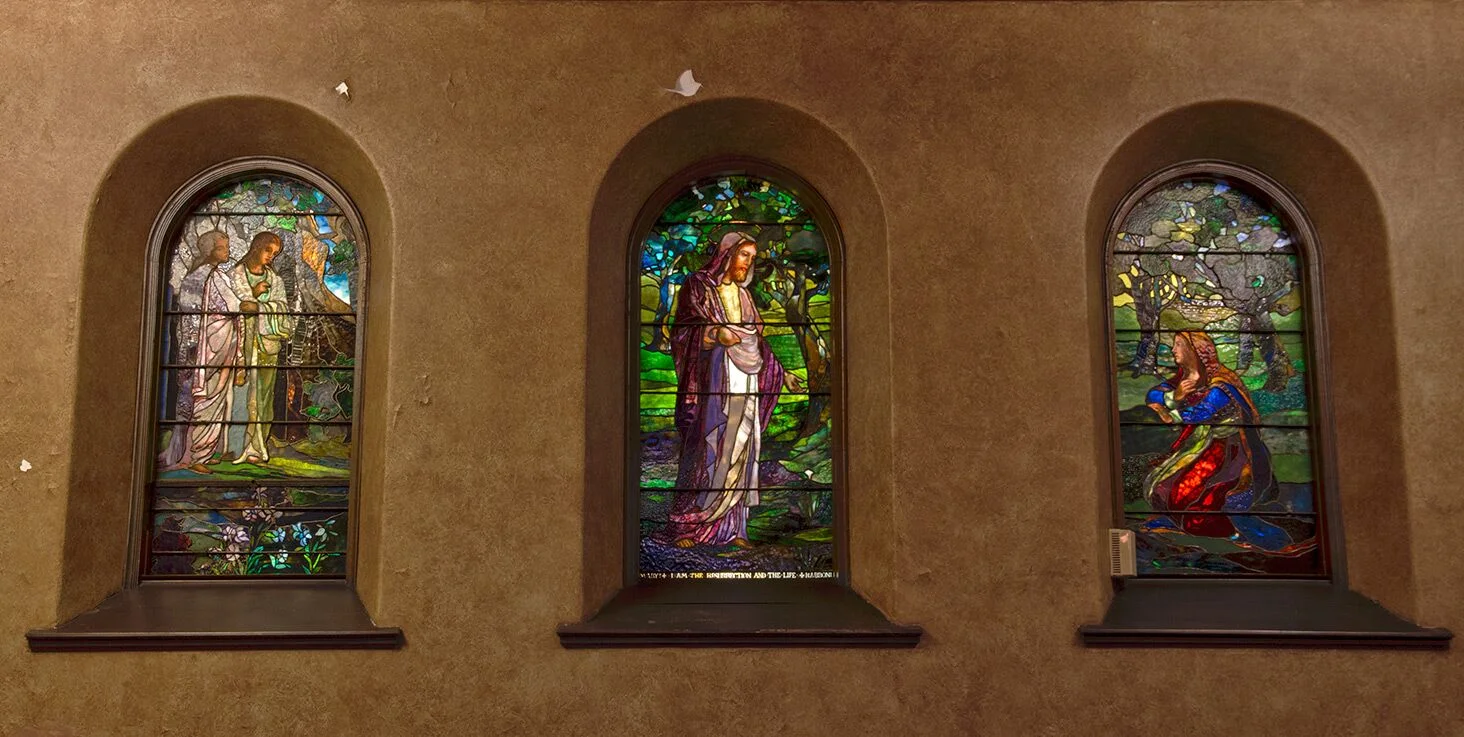
BLOG
Heritage: Mary Tillinghast
Once known as “the most versatile artist we can boast of among women in this country” in an 1896 magazine profile, Mary Tillinghast certainly had talent. She started her career (in days when women did not have careers) as an apprentice to renowned artist John La Farge.
From the 1880s until her death at age 66 in 1912, Ms. Tillinghast ran a workshop in Greenwich Village. She received medals at the Chicago Exposition in 1893 (gold) and the Charleston Exhibition in 1902 (bronze). Known for using dark, rich colors in stained glass, she also designed mosaics, tapestries, and murals.
She has been described as “deeply talented,” “willful,” and “whip-smart.” Ms. Tillinghast grew up with wealth, and she never married.
Her works can be found from Maine to North Carolina and as far west as Illinois. New York City, Pittsburgh, and of course, Buffalo, were recipients of her art.
In our sanctuary, three Tillinghast lancelets in the west transept (under the Ascension window) make up “The Resurrection.” One of them is pictured in this article.
“In My House Are Many Mansions” in the east aisle includes another three lancelets. One is signed, although the signature is faint.
Ms. Tillinghast’s archives vanished after her death. Her former studio location is now part of the NYU campus. The school honors her with a plaque.
Many of her works remain in NYC and New Jersey. Regrettably, windows in Asheville, North Carolina, were so badly deteriorated that they crumbled into six-inch pieces.
A distant cousin has spent his life looking for traces of Mary’s archives. Sadly, she is largely forgotten according to her relative. Let’s be sure to remember her here!
Amos Callender—the Man, the Myth, the Legend
Deacon Amos Callender was the first clerk of Session, First Church’s governing board, and the man who saved our minutes book by taking it on horseback to Batavia in a pillowcase when the British burned Buffalo in the War of 1812. What else do we know about him?
Deacon Amos Callender arrived in Buffalo from his native Milton, Vermont, in 1807 or 1808. He possessed a superior education for the time, though he was not a college graduate. He worked as a bookkeeper, teacher, deputy postmaster, and surrogate of the county. The causes of education and religion were important to him, and some say he was responsible for sustaining schools and worship in early Buffalo.
The first gathering for worship after the War of 1812 was held in his home. He was described as “a man of great firmness and equanimity of temper, of the most inflexible integrity, ever ready to perform any duty, always wise, discreet, and charitable towards the feelings and infirmities of others. Buffalo had no more useful citizen than Deacon Amos Callender.”
Deacon Callender served as ruling elder at First Church until his removal to Black Rock in 1840. Ultimately, he removed himself to Central Presbyterian Church* and remained a ruling elder there until his death in 1859. He was married three times and had six daughters. Two were well-known Buffalo residents, Mrs. Wm. Ketchum and Mrs. Willcox.
“It may be truly said that Deacon Callender led an active, useful life. Few men have had the opportunity of doing so much good by active labor, by precept and by example. His memory will be cherished with esteem and gratitude by all who knew him and could appreciate a truly good and upright man.”
Source: An Authentic and Comprehensive History of Buffalo by William Ketchum (1864)
*First and Central Presbyterian Churches consolidated in 2008



